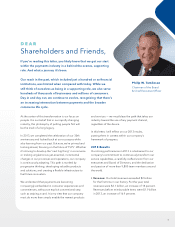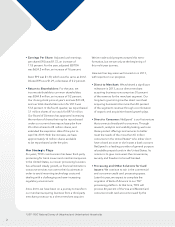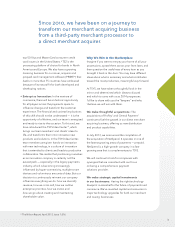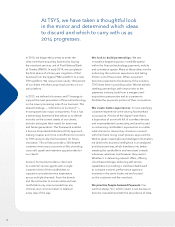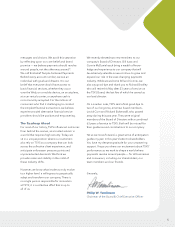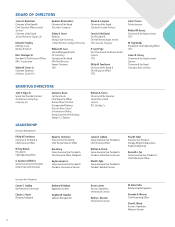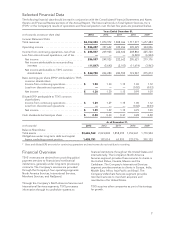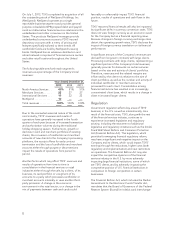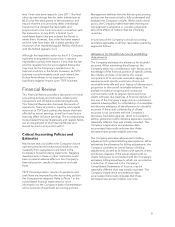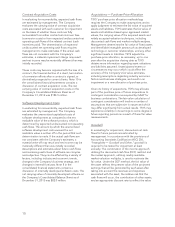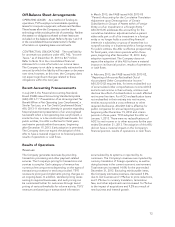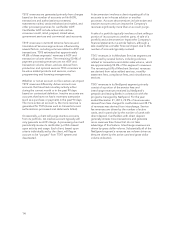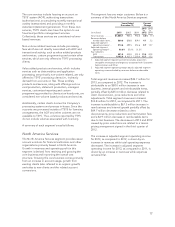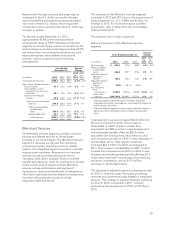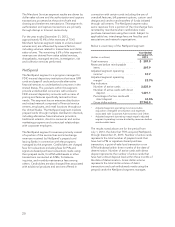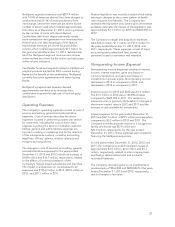NetSpend 2013 Annual Report Download - page 13
Download and view the complete annual report
Please find page 13 of the 2013 NetSpend annual report below. You can navigate through the pages in the report by either clicking on the pages listed below, or by using the keyword search tool below to find specific information within the annual report.
of invested capital. Cash flows are estimated for
future periods based on historical data and
projections provided by management. If the actual
cash flows are not consistent with the Company’s
estimates, a material impairment charge may result
and net income may be materially different than was
initially recorded. Note 6 in the consolidated financial
statements contains a discussion of goodwill. The net
carrying value of goodwill on the Company’s
Consolidated Balance Sheet as of December 31,
2013 was $1.5 billion.
Long-lived Assets and Intangibles
In evaluating for recoverability, expected
undiscounted net operating cash flows are estimated
by management. The Company reviews long-lived
assets, such as property and equipment and
intangibles subject to amortization, including contract
acquisition costs and certain computer software, for
impairment whenever events or changes in
circumstances indicate that the carrying amount of an
asset may not be recoverable. Recoverability of
assets to be held and used is measured by a
comparison of the carrying amount of an asset to
estimated undiscounted future cash flows expected
to be generated by the asset. If the actual cash flows
are not consistent with the Company’s estimates, a
material impairment charge may result and net
income may be materially different than was initially
recorded.
Revenue Recognition
The Company recognizes revenues in accordance
with the provisions of Staff Accounting Bulletin (SAB)
No. 104, which sets forth guidance as to when
revenue is realized or realizable and earned when all
of the following criteria are met: (1) persuasive
evidence of an arrangement exists; (2) delivery has
occurred or services have been performed; (3) the
seller’s price to the buyer is fixed or determinable;
and (4) collectability is reasonably assured.
The Company evaluates its contractual arrangements
that provide services to clients through a bundled
sales arrangement in accordance with the provisions
of ASC 605 Revenue Recognition. ASC 605
addresses the determination of whether an
arrangement involving more than one deliverable
contains more than one unit of accounting and how
the arrangement consideration should be measured
and allocated to the separate units of accounting.
A deliverable in multiple element arrangements
indicates any performance obligation on the part of
the seller and includes any combination of
obligations to perform different services, grant
licenses or other rights. Revenue is allocated to the
separate units of accounting in a multiple element
arrangement based on relative fair values, provided
the delivered element has standalone value to the
customer and delivery of any undelivered items is
probable and substantially within the Company’s
control. Evidence of fair value must be objective and
reliable. An item has value to the customer on a
standalone basis if it is sold separately by any vendor
or the customer could resell the deliverable on a
standalone basis.
As TSYS’ business and service offerings change in the
future, the determination of the number of
deliverables in an arrangement and related units of
accounting and future pricing practices may result in
changes in the estimates of vendor-specific objective
evidence of selling price (VSOE) and estimate of the
standalone selling price (ESP), which may change the
ratio of fees allocated to each service or unit of
accounting in a given customer arrangement. There
were no material changes or impact to revenue in
revenue recognition in the year ended December 31,
2013 due to any changes in the determination of the
number of deliverables in an arrangement, units of
accounting, or estimates of VSOE or ESP.
Cardholders’ Reserve
The Company is exposed to losses due to cardholder
fraud, payment defaults and other forms of
cardholder activity as well as losses due to non-
performance of third parties who receive cardholder
funds for transmittal to the Issuing Banks (banks that
issue MasterCard International or Visa USA, Inc.
branded cards to customers). The Company
establishes a reserve for the losses it estimates will
arise from processing customer transactions, debit
card overdrafts, chargebacks for unauthorized card
use and merchant-related chargebacks due to non-
delivery of goods or services. These reserves are
established based upon historical loss and recovery
rates and cardholder activity for which specific losses
can be identified. The cardholders’ reserve was
approximately $5.8 million as of December 31, 2013.
The provision for cardholder losses is included in cost
of services in the Consolidated Statements of
Income. The Company regularly updates its estimate
as new facts become known and events occur that
may impact the settlement or recovery of losses.
11


